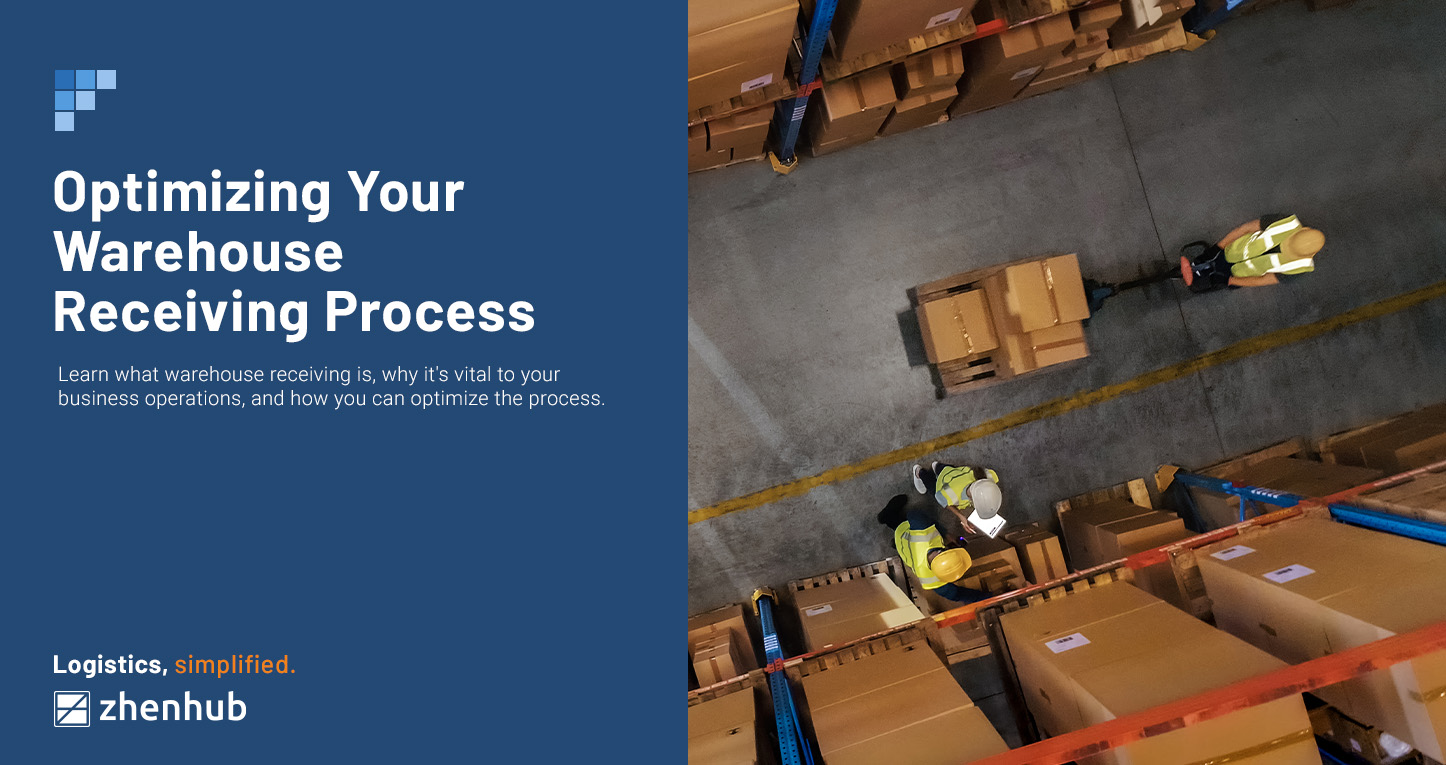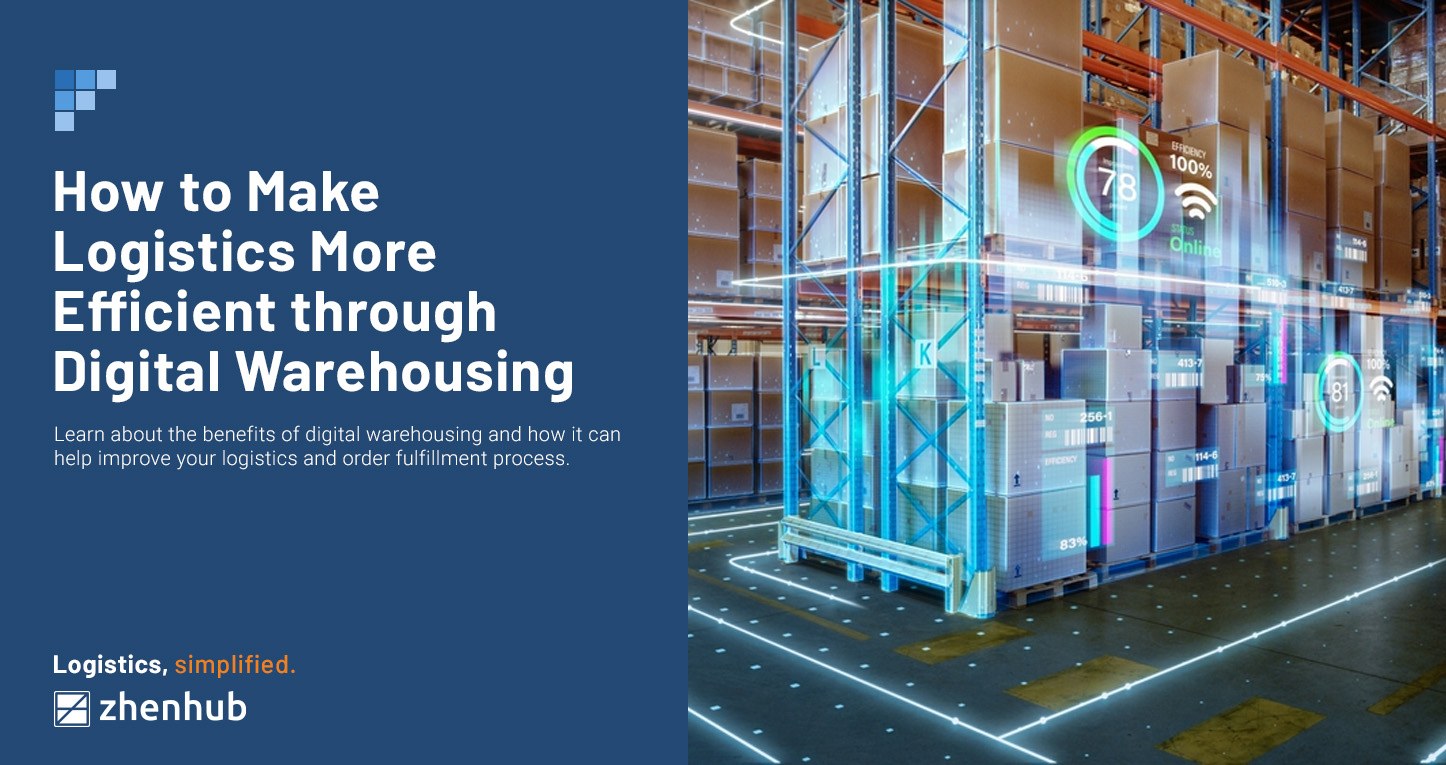
4 Warehouse Optimization Tips for a More Efficient Order Fulfillment Process
Time to read: 6 minutes
Warehouses are a vital part of retail business, but they can be especially critical for online merchants to manage and fulfill orders efficiently. This article discusses optimizing your warehouse’s operations and improving the fulfillment process.
Business owners should be pretty familiar with the difficulties of managing a warehouse effectively. It can be challenging to keep track of all the factors needed to receive and deliver your items without a hitch. These challenges, from inventory management problems to ineffective warehousing procedures and delivery delays, can lead to lost sales and disgruntled clients.
Companies can resolve these difficulties through warehouse optimization. It also sets up your warehouse without the challenges caused by a lack of real-time data. You may anticipate improved outcomes and satisfied clients once you enhance warehouse operations.
It can be intimidating to stand in a warehouse full of your goods, with endless rows of packages and items for potential clients.
Questions may cross your mind: “Do we have enough stock to serve our clients? Is the warehouse set up to deliver orders on time?”
There is little room for error when transporting goods from the warehouse to the customer’s doorstep. One mistake or delay can harm your company’s reputation and income stream. While business models such as on-demand fulfillment help achieve great customer experiences, in the warehouse that can spell the difference between a repeat customer or a negative review.
Warehouse optimization strategically allocates time, space, and resources to increase warehouse productivity. This approach also uses automation and thorough planning to optimize internal processes like workflow, customer service, and warehouse storage.
While some organizations may handle things internally, others may choose to outsource their inventory and delivery processing to a third-party logistics (3PL) fulfillment warehouse.
Either approach may succeed, depending on the chosen business strategy. For internal operations to be successful, warehouses must utilize available space efficiently while maintaining worker safety.
Why Warehouse Optimization is Important
Because they hold the most vital component of the company, inventory, and warehouses are essential to the success of any eCommerce business.
Your internal logistics procedures must be as effective as possible regardless of the type of warehouse you employ. This can be a storage facility that you privately own or one that is outsourced from a 3PL fulfillment firm. By putting efficiency first, a successful supply chain guarantees on-time order fulfillment for the consumer and reduces expenses.
By making the most of their available space, businesses may construct both profitable and productive warehouses.
But note that optimizing a warehouse does not mean compromising service quality to reduce expenses.
Due to two underlying factors, traditional warehouses (or distribution hubs) now require transformation and warehouse optimization.
- Fulfillment and distribution are changing because customers now demand flexible, quick service. Companies should maximize the interaction between people and machines to produce a highly productive partnership. It’s especially true if they want to satisfy the demands of tech-savvy clients.
- Technological innovation is booming in warehouse management. Businesses
- must learn how to optimize their warehouses using IoT, AI, autonomous driving, collaborative robotics, and other cutting-edge technologies.
You might be discouraged from trying to optimize your warehouse due to the expense, time commitment, and effort. However, having a properly optimized warehouse offers several benefits that make the cost worthwhile.
First is increased customer retention rates. When your staff can process products faster and more accurately, this means faster and accurate deliveries. After all, being able to keep customers content and happy can lead to bigger profits. It can boost customer retention by 5% and increase profits by 25-95%.
Optimizing your warehouse also gives you access to important data that can help you track and understand KPIs better. Utilizing your space requires making accurate predictions on what to stock up and what won’t sell quickly. You’ll have fewer problems thanks to better space usage, which also helps you avoid long-term storage costs.
4 Tips for Effective Warehouse Optimization
While improving your warehouse operations may seem challenging, there are simple strategies to help you get started. When you progressively change your warehouse environment, this will eventually boost supply chain efficiency. Here are some quick ideas to improve your warehouse:
1.Establish Efficient Processes
Your main objective as a business owner or warehouse manager is ensuring that the proper goods arrive at the appropriate time and location. It would be best to improve your warehouse operation for better performance continually. It should cover receiving, picking, shipping to data collecting.
Product delivery can be done manually or automatically. The manual checking procedure involves an employee reading through shipment invoices. They have to verify all the items on the invoice and make sure the quantity and condition match what is stated on the document. Although this approach is less expensive, human mistakes are more likely. That means you’ll have to double-check, which could increase the cost to your business.
By implementing warehouse management software to automate this process, you can eliminate mistakes and save time and money. You can upload all the data onto a central server by simply scanning product barcodes using automation software.
2.Efficient Use of Warehouse Space
Companies can reduce inefficiencies by having an efficient layout. When cutting down on travel time within the warehouse, there’s more to consider than just putting your operations and inventory storage closer together. Modern warehouse optimization uses machine learning technology to adapt the best floor layouts for the goods and processes. Fulfillment will happen more quickly if you have a location that can adapt to demand immediately.
Organize each item in your inventory thoroughly. Start by mapping out your warehouse’s layout. Make the most of your space’s potential by optimizing the arrangement. When everything is structured, it’s simple to do tasks more quickly within a day. Avoiding extending the warehouse can save on overhead costs and enables staff to work more efficiently.
3. Strong Safety Protocols
Any existing safety concerns are mitigated by more space and better workflow. It can reduce employee injuries and increase productivity with greater room to work.
Provide your employees with the right tools and equipment to do their jobs properly. It also reduces administrative costs throughout the working process and creates a safer, more uniform workplace.
Employee safety should be a major concern. Setting high standards and maintaining them is essential, as is providing personnel with continual training. Additionally, you can guarantee safety throughout the supply chain by pre-qualifying all vendors. You’ll see a beneficial impact cascade on the workplace’s safety culture.
4.cTrain, Educate, and Implement
Make sure your process specialists are up to speed on any changes implemented in your warehouse. They are the ones who best understand how to decrease or eliminate waste as they perform the tasks every day. Companies can considerably increase warehouse productivity by aligning their management and employees with processes that value inquiry, accountability, cooperation, and customer satisfaction.
Incorporate a robust cross-training program. It makes tasks simple enough to understand to outline the entire operation to new associates. Set it up so they can grasp how new tools and software function. Allow them to test their performance before allowing them to join full-scale production. Warehouse managers should encourage workers to contribute to the warehouse optimization process. You could also inform the advantages of new software or techniques.
Implementing Warehouse Optimization
Automation is essential for improving warehouse operations. You could automate selection, packaging, and shipping operations and reduce human errors. It can help redirect your human workforce to do more high-value work and look for more revenue channels.
Automated warehouse management and control systems enable real-time administration of material handling equipment. It can even alert warehouse managers to potential bottlenecks.
By introducing automation to your warehouse processes, data can be collected more effectively, rapidly, and correctly. It will also provide warehouse managers with real-time information and insight to aid decision-making.
Whatever method of warehouse optimization you decide to start with, identification must be a part of your workflow. For instance, efficient and accurate picking and packing depend on specific product and location identification. Another requirement is to identify staging lanes and storage spaces. Successful warehouses utilize labels that are simple to read on pallets, cartons, storage shelves, pallet racks, aisles, and floors.
More warehouses will be automated and more efficient as the logistics sector integrates new technologies, tools, and procedures. Your company can operate more efficiently than ever by optimizing your warehouse space with a thorough evaluation. Searching for efficiencies and having the right platform in place may simplify this process.
But you can’t expect to finish a warehouse optimization strategy in a single day.It may take many months to change your warehousing procedures entirely.
Around three months following implementation, reevaluate your plan for warehouse optimization. Doing this ensures the procedures are correctly followed and enables you to make changes as necessary.
Although warehouse optimization may seem difficult, businesses need to employ it to remain competitive in an online selling market. The warehouse will continue to be affected by the emergence of new business models, modifications in employee expectations, and utilization of advanced technology in the future.
ZhenHub allows you access to globally-connected eCommerce fulfillment centers built for multi-platform integrations. Focus on accelerating your business growth with advanced logistics software solutions. Start your warehouse optimization plans by signing up to our website.


